AFSIM
DCS has been a key AFSIM capability provider for over 9 years with over 20 years’ experience developing AFSIM capabilities, including being the original developers and maintainers of core AFSIM source code. DCS develops and applies the AFSIM framework in support of various mission objectives for Air Force, Navy, and Joint sponsored initiatives. Our analysts are conducting AFSIM-based virtual, constructive mission, interactive wargaming, and engagement level analysis.
DCS produces broadly reaching scenarios derived from intelligence sourced data combined with representations of present day to cutting edge future concepts. These concepts are portrayed with a wide array of behaviors, responses, and orders of battle to fulfill AFSIM modeling requirements for the evolving battlefield reaching beyond a single scope of effectiveness and into multi-domain coordinated capabilities.

The following highlights AFSIM foundation and capabilities:
- Government owned, open source, community-informed, military simulation framework
- Part of a shared “digital commons” across DoD EMS&A
- Multi-domain capabilities from sub-surface to space including EW and cyber
- Multi-resolution modeling
- From detailed physics-based to simple effects representations of platforms, sensors, communication systems, and weapons Built upon the needs of the analytic community
- Modern C++ framework of simulation “building blocks” utilizing Object Oriented (OO) design and offers a flexible plug-in API
- Scripting language (javascript like) for constructing scenarios and providing customized control without modifying C++ code
- Script-based definition of behaviors, tactics, and command structures
- Transitions creation of tactics and behaviors from software developers
to the analyst
- Transitions creation of tactics and behaviors from software developers
- Flexible agent modeling architecture permitting realistic representation of tactics and behaviors
- Component based architecture offers modularity for platform components (sensors, movers, weapons)
- Realistic perception-based representations of systems
- Includes tracking, correlation, and fusion algorithms
- Allows fog of war representation
- “Box-set” Models and Scenarios
- Domain-specific examples and laydowns
- Basic ground warfare modeling
- Basic surface and undersea warfare modeling
- Map overlay banner displays scenario’s classification level, caveats, and trigraphs

DISTRIBUTION STATEMENT A: Approved For Public Release; Distribution is Unlimited. PA # AFRL-2022-4038
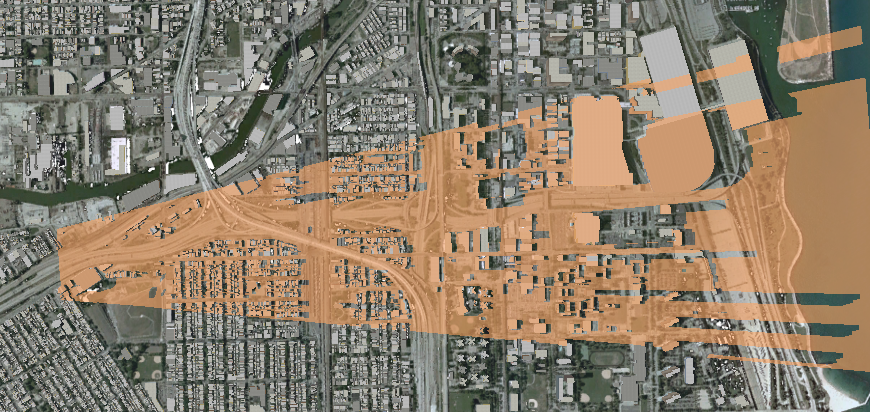
DISTRIBUTION STATEMENT A: Approved For Public Release; Distribution is Unlimited. PA # AFRL-2022-4038
- Advanced air-to-air combat capability
- Mover creator is a GUI-based tool that simplifies the development of AFSIM mover models
- Framework for effects-driven cyber modeling
- Electronic warfare effect modeling architecture
- AFSIM includes a suite of supporting tools
- Wizard (Integrated Development Environment) provides an end-to-end analyst toolchain, used for scenario development and simulation execution
- Mystic is an extensible framework for recording, playback, visualization, with capability to dive into performance statistics
- Warlock is an operator-in-the-loop tool supporting experimentation and wargaming
- Ability to run both constructively and real-time while utilizing the same scenarios
- Links to other simulations via DIS or HLA
- Able to convert open street map files to AFSIM route networks
- Combines timeliness in development and fidelity of operations at a level not previously experienced

DISTRIBUTION STATEMENT A: Approved For Public Release; Distribution is Unlimited. PA # AFRL-2022-4038
GOVERNMENT MANAGEMENT
AFSIM is available to U.S. Gov’t and DoD industry at no cost, includes source code, documentation, and access to training material.
Information Transfer Agreement (ITA) allows for direct distribution to industry, including classified version allowing use of AFSIM for IRAD projects.
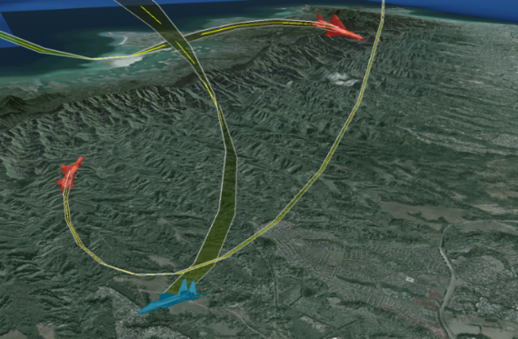
DISTRIBUTION STATEMENT A: Approved For Public Release; Distribution is Unlimited. PA # AFRL-2022-4038
Wizard is AFSIM’s Integrated Development Environment (IDE) that DCS uses to rapidly define and integrate AFSIM platforms and platform components into analytic scenarios. Wizard patterns itself on IDEs created for use with software development and supports feature rich editing capabilities such as syntax highlighting, text auto-complete and right-click navigation. Wizard permits DCS to edit input files, execute an AFSIM scenario, and visualize the output.

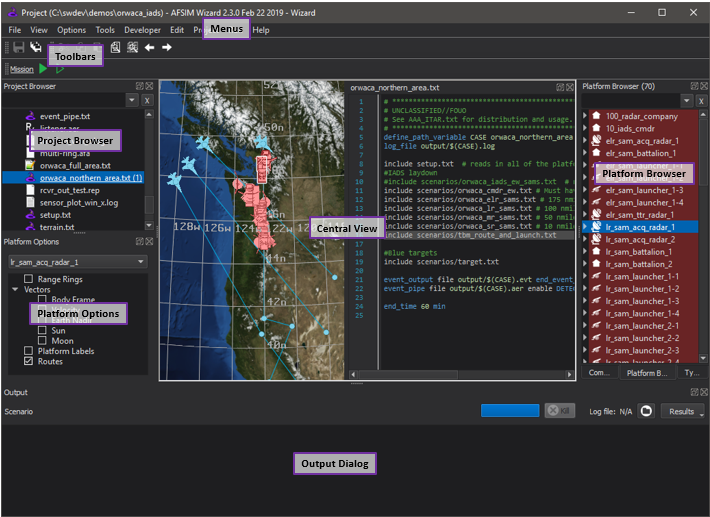
DISTRIBUTION STATEMENT A: APPROVED FOR PUBLIC RELEASE; Distribution is Unlimited. PA # AFRL-2022-4038
As the original developers of Warlock, DCS creates custom displays, interfaces, and visualizations to support distributed wargames. DCS has vast experience developing scenarios used in both constructive and virtual environments to support mission planning, operational planning, and MS&A powered wargames.

- Supports engagement, mission, operational, and strategic level experimentation and analysis within AFSIM
- Control AFSIM entities to support constructive analysis, wargaming, and operational planning
- Provides the same multi-domain and multi-resolution capabilities as AFSIM
- Enables iterative collaboration between wargamer and analyst
- Shares the same simulation engine (mission.exe) used in constructive and live virtual analysis
- Separate application (warlock.exe) delivered in AFSIM release
- Central map display with intuitive controls
- Extendable application and fully customizable
- Supports plugins to enable expansion of capabilities
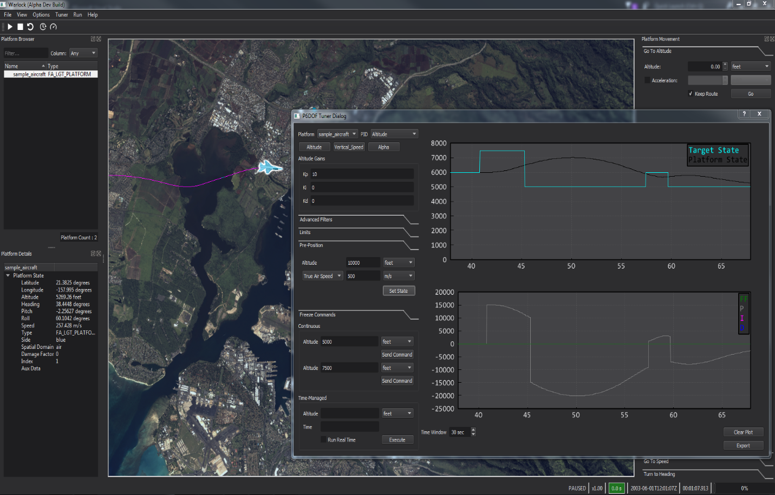
- Enables rapid development of custom operator-in-the-loop “panels”
- Most functionality is modular and can be customized
- Flexible panel architecture
- Real-Time data visualization
- Killer-Victim scoreboard to track statistics
- Plot platform characteristics vs time (altitude, speed etc.)
- Drag and drop operations for repositioning windows in the central display
- Astrolabe tool allows injection of orbital mission sequences into running simulations
- Solar lighting and sub-solar point display
- Cyber engagement plugin to view perceived and control cyber attacks and scan events
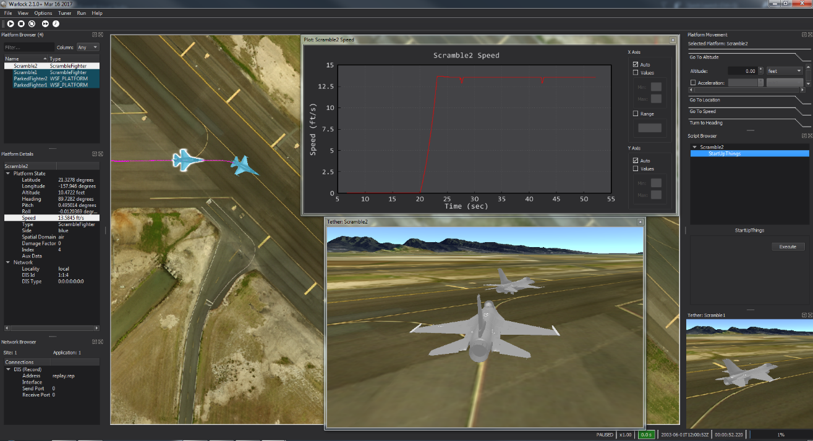
DISTRIBUTION STATEMENT A: APPROVED FOR PUBLIC RELEASE; Distribution is Unlimited. PA # AFRL-2022-4027

DISTRIBUTION STATEMENT A: APPROVED FOR PUBLIC RELEASE; Distribution is Unlimited. PA # AFRL-2022-4027

DISTRIBUTION STATEMENT A: APPROVED FOR PUBLIC RELEASE; Distribution is Unlimited. PA # AFRL-2022-4027
- Scenario control (start, stop, multiples of real-time, etc.)
- Platform control (go to location, fire weapon, etc)
- Tether to and follow platforms (custom camera views)
- Execute custom scripts on a platform
- Ability to save and recall camera views via toolbar
- User actions can be saved to an AER file
- Networked chat channels for communication with other players
- Ability to add points of interest, range rings, and annotations to the map
- Support for map layers including shape files
- Sensor projections/terrain masking
- Video capture/screenshot capability
- Model viewer utility
- Dialog builder allows users to build a dialog with customizable buttons
- that are associated with AFSIM scripts
- Platform part browser allows users to change the debug on, and operational flags of a platform part
- Platform decorations can be used to mark platforms for quick identification
- Platform options dialog to control interaction lines and more
DISTRIBUTED WARGAMING
- Enable multi-user simulation interactions
- Enable physically distributed multi-cell execution
- Monitors remotely connected simulations (status bar update, auto-pause)
- Distributed data logging capability
- Sim controller clock speed up to 1000x real-time

DISTRIBUTION STATEMENT A: APPROVED FOR PUBLIC RELEASE; Distribution is Unlimited. PA # AFRL-2022-4027
DCS is your source for AFSIM expertise and analysis excellence. As the original developers of Mystic, DCS conducts military utility and effectiveness analysis leveraging a variety of analytic techniques, our expert knowledge of AFSIM’s flexible script-based input and user defined output to examine vast trade spaces across a myriad of existing and emerging equipment, concepts, actions, and settings.

- Visualize replay of an AFSIM simulation execution
- AFSIM event recordings (AER) file generated by the simulation
- Supports analysis within AFSIM
- Separate application (mystic.exe) delivered within the AFSIM release that can also be launched from Wizard or Warlock
- Automatically alerts user to re-load recording if scenario has been re-run in AFSIM
- Map overlay banner displays scenario’s classification level, caveats, and trigraphs
- Dock widgets can be moved to other windows or floating windows and many can be shown at a time
- Most functionality can be enabled/disabled and customized

DISTRIBUTION STATEMENT A: Approved For Public Release; Distribution is Unlimited. PA # AFRL-2022-4037
- Ability to mark points of interest, range rings, measure distance, and make annotations to map view
- Ability to drag items off the platform details and onto the map
- Model/Icon viewer and model/icon sizing capability
- Visualize
- Tracks and ability to plot track metrics
- Interaction lines (track, fire, jam etc.)
- Sensor and jammer volumes
- Platform history (trace-lines, wingribbons)
- Ability to save and load event filters using config files
- In-Application links to documentation
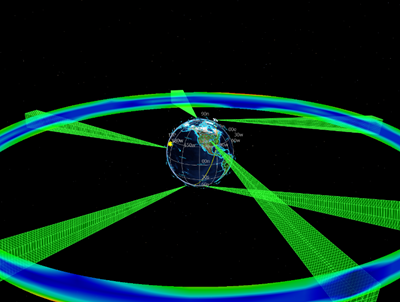

DISTRIBUTION STATEMENT A: Approved For Public Release; Distribution is Unlimited. PA # AFRL-2022-4037
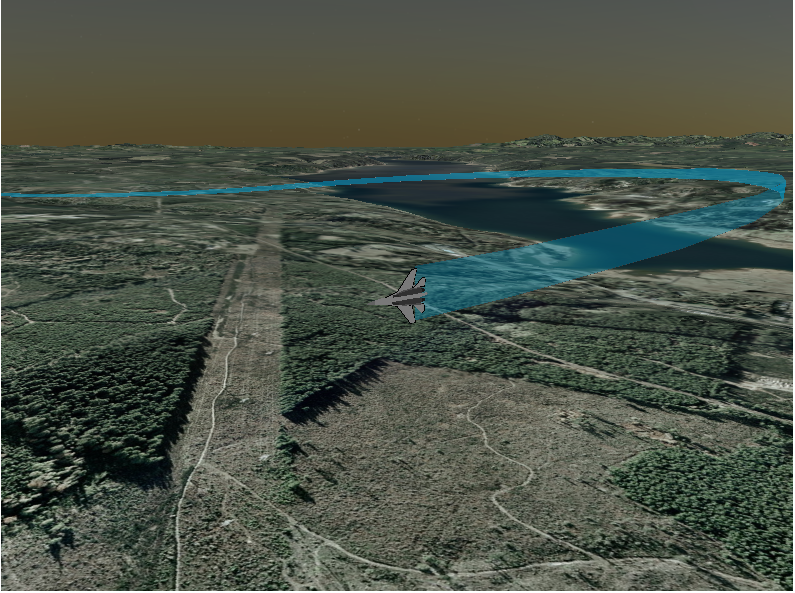
DISTRIBUTION STATEMENT A: Approved For Public Release; Distribution is Unlimited. PA # AFRL-2022-4037
- Time controller options (jump to time, set play rate, play in reverse, play forward, pause, display rate, calendar time, sim time, bookmark navigation)
- Tether to platforms (custom camera views) with a special satellite tether for space domain platforms
- Compute relative metrics on the fly and drag and drop data onto any window
- Line-of-Sight tool allows a line to be drawn between two entities which will show when the line-of-sight is blocked by terrain
- Video capture/screenshot capability
- Ability to plot data over time by right clicking on numerical value in platform details dialog
- Plot by platform, type, side, category etc.
- Ability to plot interaction state changes
- Integrated tools allow for the merger of replays from distributed simulations
- Behavior tree tool can be used to visualize the execution of advanced behavior trees
- Built in reports to look at detection attempts, engagement analysis, event list, and file statistics
- Ability to use engagement reports to trace tracks through the kill chain
- Users can customize event reports
- Platform filter-rules to search by side, type, or category
- Ability to export filtered event-list to CSV files

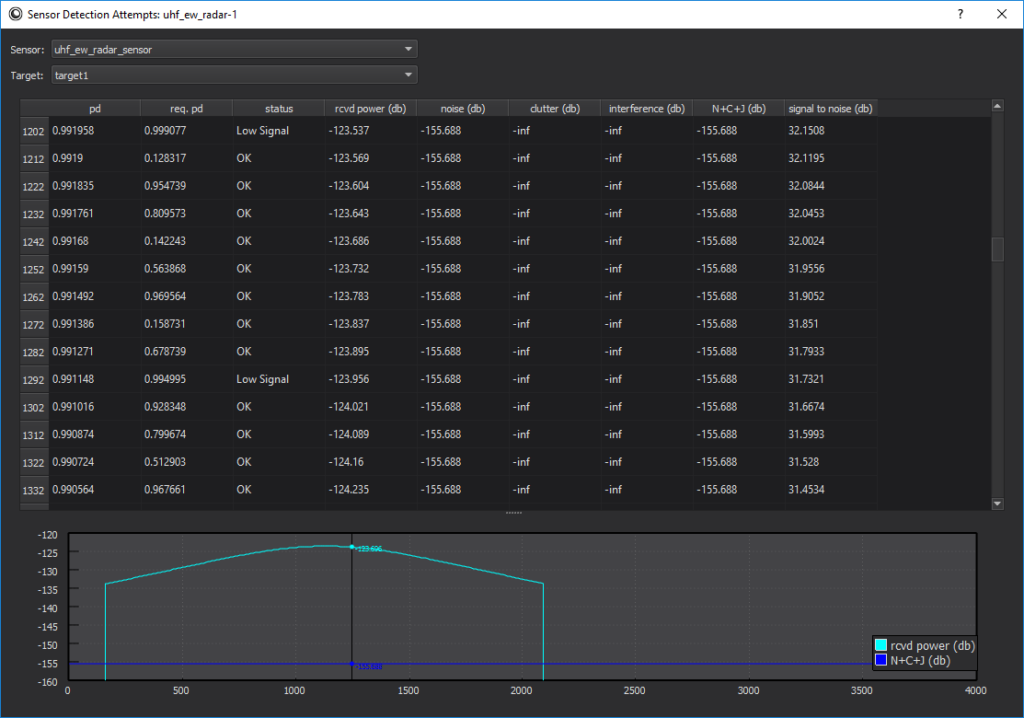
DISTRIBUTION STATEMENT A: Approved For Public Release; Distribution is Unlimited. PA # AFRL-2022-4037

DISTRIBUTION STATEMENT A: Approved For Public Release; Distribution is Unlimited. PA # AFRL-2022-4037
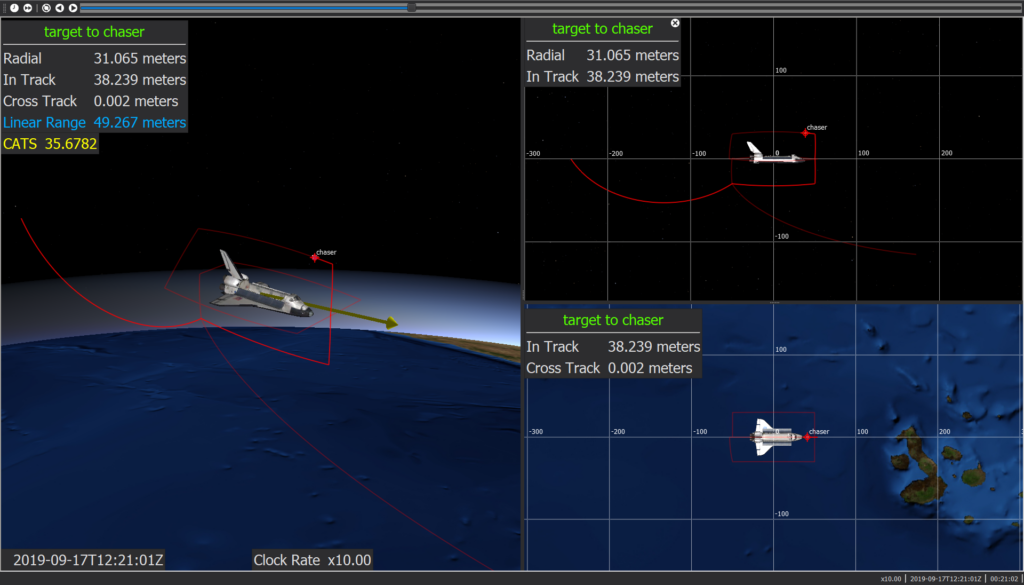
DISTRIBUTION STATEMENT A: Approved For Public Release; Distribution is Unlimited. PA # AFRL-2022-4037
IST are the original developers of AFSIM space capability and the space boxset in the AFSIM framework. IST has vast experience developing new model capabilities, data rich displays, and adaptable interfaces to meet modeling and simulation requirements for space assets as well as other emerging technologies.
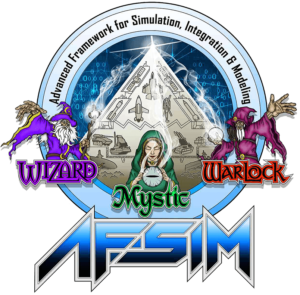
- AFSIM’s multi-domain modeling delivers significant and evolving capabilities to simulate key space mission areas
- ISR, SDA, RPO, PNT, SATCOM, OPIR, launch-to-orbit
ASTROLABE
- Use astrolabe to create, verify, and visualize orbital mission events and sequences
- Plan maneuvers constructively in Wizard
- Execute tactical maneuvers in real-time with Warlock
- Utilize a variety of supported orbital maneuver events
- Rendezvous, intercept, target, match velocity
- Normal, tangent, radial, plane change
- Launch insertion, hohmann transfer, circularize
- Optimize maneuvers based on time or delta-v and customize event constraints
- Specify impulsive or finite maneuvering model
CONSTELLATION MAKER
- Rapidly prototype and study constellations targeting specific mission areas
- Generate notional constellations via GUI or scripted option
- Traditional walker delta and walker star types
- Custom constellation types
- Automatically create AFSIM scenario input files to facilitate design of experiments
- Constellation members inherit all subsystems from their defining platform type
- Customize specific constellation members via the advanced generator option
RENDEZVOUS & PROXIMITY OPERATIONS (RPO)
- Explore AFSIM’s expanded space-domain visualizations for RPO to mission plan and understand the playing field
- Visualize relative orbit systems using tracks (perception) or truth
- Compute relative metrics on the fly between a target HVA and chaser satellites
- Tile radial, in-track, and cross-track (RIC) planes of interest relative to selected HVAs
- Display dynamic data of concern on any satellite tether view window

DISTRIBUTION STATEMENT A: Approved For Public Release; Distribution is Unlimited. PA # AFRL-2022-4041

DISTRIBUTION STATEMENT A: Approved For Public Release; Distribution is Unlimited. PA # AFRL-2022-4041
AFSIM COVERAGE
- Study sensor coverage of notional or existing ISR constellations
- Define coverage grids of various kinds (terrestrial, GEO belt)
- Select coverage assets from existing platforms or platform templates
- Collect a wide variety of measures of effectiveness
- Including: coverage time, revisit time, asset coverage, access duration
- Generate reports in multiple formats
- Visualize results with integrated overlay in Wizard, Warlock, and Mystic
SPACE ENVIRONMENT, SENSORS, & SIGNATURES
- Simulate the space environment
- Satellite signatures – RF, IR, and optical
- Orbital conjunction prediction and avoidance
- Collision and debris modeling
- Conduct space domain awareness (SDA) analysis with expanded cislunar modeling
- Model space surveillance network sensors
- Use multi-type data fusion to track and update perceived states of space objects
- Employ AFSIM’s flexible, extensible, and accurate integrating propagator
- Create scenarios around central bodies other than earth
MULTI-DOMAIN OPERATIONS
- AFSIM’s modeling, simulation, analysis, and visualization capabilities span all domains
- Seamlessly integrate space assets with surface, ground, and air platforms
- Explore the interplay of TCPED and F2T2EA chains
- Take a small step into space with AFSIM; achieve a giant leap in your analysis!
UTILIZE AFSIM’S EXTENSIVE USER RESOURCES
- Physics and API documentation
- Satellite and space operations demos
- DIY training with user’s guide
- Hands-on, SME-guided AFSIM training
- Space and basic user training
- Developer training
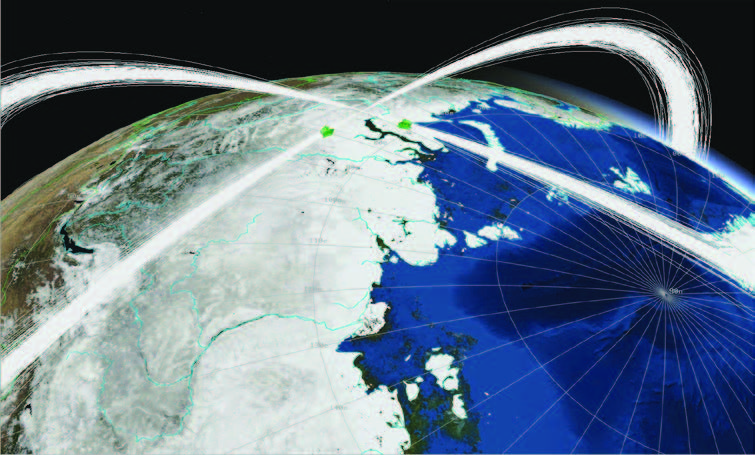
DISTRIBUTION STATEMENT A: Approved For Public Release; Distribution is Unlimited. PA # AFRL-2022-4041
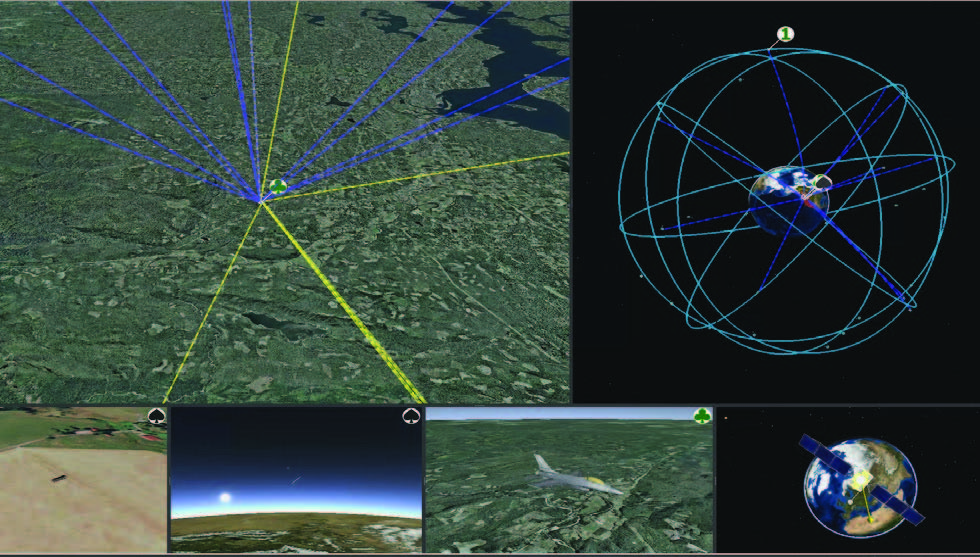
DISTRIBUTION STATEMENT A: Approved For Public Release; Distribution is Unlimited. PA # AFRL-2022-4041
As the principle developers and maintainers of core AFSIM source code, DCS offers unparalleled training expertise and stands ready to provide your team with the capabilities you need to execute your mission.
DCS offers Custom Consulting and Teaming Opportunities for AFSIM.
Click to Learn More >
Contact Us
6909 Metro Park Drive, Suite 500
Alexandria VA 22310
P: 571-227-6000
info@dcscorp.com
Join Our Team
DCS has amazing, talented, and
technology-savvy people. We're growing
continuously and sustainably.
Check out our DCS Careers
© 2025 DCS Corporation, All Rights Reserved
Site Map
